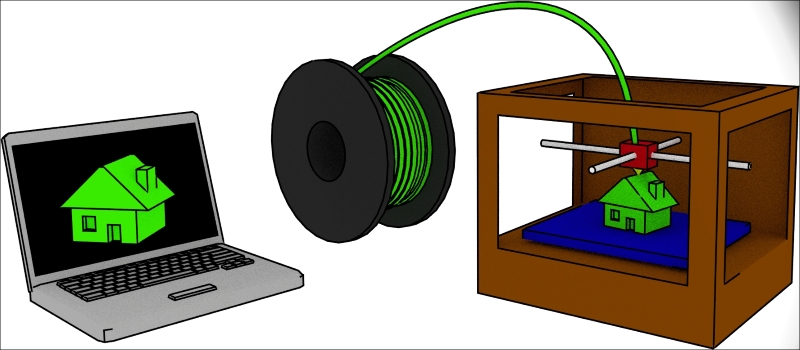There tends to be a lot of variation within the family of FFF 3D printers. Some have their mechanisms exposed to the environment so that they're easy to repair, while some are protected with fancy covers so that they look good. Some have one extruder, while some have two or more. Some have fancy interface screens, and some require you to use a computer to access even the most basic functions. Yet, for all their variations, there are many similarities that all FFF printers share which define their type. Being familiar with how FFF 3D printers work will help you guide yourself while designing for them.
For FFF 3D printers, a computer takes a 3D model and translates it into commands that the printer can follow. The printer then takes a roll of plastic filament on a spool and uses a feeder mechanism to feed it into the hot end, where the plastic filament is melted and squirted out at a controlled rate onto the print bed, where the print is built up. The extruder head and print bed are moved relative to each other in 3 dimensions, using some sort of movement system in order to create the 3D model:

Drawing a print layer by layer like this takes, as might be expected, a little bit of time. The larger the object, the longer a print will take. FFF 3D printing isn't a fast process. But once the process is done, a new thing will have been created.



